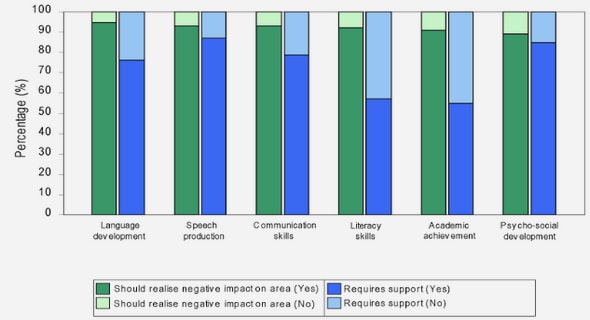(Downloads - 0)
For more info about our services contact : help@bestpfe.com
Table of contents
1 General context
1.1 Purpose of the thesis
1.1.1 Rainfall measurement uncertainties
1.1.2 Extreme rainfall modeling
1.1.3 Scale-invariance of heavy time rainfall
1.1.4 Scale-invariance of heavy spatial rainfall
1.1.5 Scale-invariance of rainfall fields in space-time
1.2 Geographical context
1.3 Meteo-hydrological context
1.3.1 Climatic features
1.4 Hydrological context
1.4.1 Ard`eche basin
1.4.2 C`eze basin
1.4.3 Gard basin
1.4.4 Vidourle basin
1.5 Measurement network
1.5.1 Point-rainfall data
1.5.2 Radar-estimated rainfall fields
1.5.3 Disdrometer data
2 Uncertainties in the extreme rainfall measurement
2.1 Introduction
2.2 Role of the sampling frequency on the statistics of extremes
2.2.1 Moving-window and fixed-window sampling
2.2.2 Uncertainties associated to the measurement resolution
2.3 Tipping-bucket rain gauge measurement
2.4 Ground measurement network for spatial estimations: limits
2.5 Conclusion
Part II Theoretical background
3 Statistics of extreme point-rainfall intensities
3.1 Introduction
3.2 Frequency and return period: definitions
3.3 Extreme Value Theory
3.4 The role of independence in Extreme value analysis
3.5 Block-maxima analysis
3.6 Analysis of exceedances: POT
3.6.1 GPD fitting on synthetic series
3.6.2 GPD fitting on real series
3.7 Comparison Block-Maxima – POT
3.8 Point process: an unified framework for extreme analysis
3.9 Stationarity of the rainfall series
3.10 Conclusion
4 Geostatistics
4.1 Introduction
4.2 Stationarity of random functions
4.3 Theoretical variogram
4.4 Sample variogram
4.4.1 Anisotropic variogram
4.4.2 Variogram of an intrinsic random function
4.4.3 Indicator variogram
4.4.4 Climatological variogram
4.4.5 Variogram models
4.5 Interpolation of point data
4.5.1 Kriging
4.5.2 Simple kriging
4.5.3 Ordinary kriging
4.5.4 Universal kriging
4.6 Conclusion
5 Scale invariance and self-similarity
5.1 Introduction
5.2 Scaling in geometry: fractals
5.3 Fractals in nature
5.4 The origin of scaling in nature: turbulence
5.5 Generalization of the fractal concept: Multifractals
5.5.1 Scaling of the Generalized Structure Function ζ
5.5.2 Moment scaling analysis
5.6 Towards an unified multifractal formalism
5.7 Multifractal spectrum estimation
5.7.1 Moment-based estimation
5.7.2 Wavelet Estimation
5.8 Scale-invariance of spatial fields
5.9 Scale-invariance of time series
5.9.1 Long-range correlation: the first evidence of long-memory systems
5.9.2 Scaling range of rainfall time series
5.9.3 Point-rainfall scale-invariant models
5.10 Scale invariance of space-time rainfall
5.10.1 The “Frozen Turbulence” hypothesis
5.10.2 The concept of dynamic scaling
5.11 Scale invariance of extreme point-rainfall: IDF curves
5.11.1 IDF scaling
5.12 Application of Multiplicative Cascades
5.12.1 Other downscaling techniques
5.12.2 Multiplicative Cascades
5.12.3 Bare and dressed quantities
5.12.4 Canonical and Micro-canonical cascades
5.12.5 Discrete and continuous cascades
5.12.6 Cascade Implementation
5.12.7 Implementation of the multiplicative cascades
5.13 Conclusion
6 Spatial Rainfall Extremes
6.1 Introduction
6.2 From point to spatial maxima: ARF
6.2.1 Background
6.2.2 Geostatistically-based ARF approaches
6.2.3 Stochastic approaches
6.2.4 Scale-invariant ARF
6.3 Max-stable spatial-maxima modeling
6.4 Conclusion
Part III Results
7 Heavy tails of rainfall distributions
7.1 Introduction
7.2 Article: Scaling properties of heavy rainfall at short durations: a regional analysis
8 A scale-invariant Intensity-Duration-Frequency model
8.1 Introduction
8.2 Article: Intensity-Duration-Frequency curves in a GEV scale-invariant framework
9 Space-time scaling of rainfall events: the September 2002 storm
9.1 Introduction
9.2 Outline of the study
9.3 Data
9.4 Scale Invariance: Generalized structure Function
9.5 Scale invariance in Space-Time
9.5.1 Connections with Geostatistics
9.5.2 Space-time scale-invariance
9.5.3 Evaluation of dynamic scaling
9.6 Final remarks
9.7 Conclusion and perspectives
10 Qualification of Meso-scale meteorological simulations
10.1 Introduction
10.2 Severity Diagrams
10.3 Rainfall intensity diagrams: an indicator of the true model resolution
10.4 Article. Severity diagrams: a new approach for the multi-scale evaluation of extreme rainfall events
10.5 Severity diagrams and ensemble simulations
10.5.1 Severity Diagram of observed fields
10.5.2 AROME ensemble 1: Variability of Boundary Conditions
10.5.3 AROME ensemble 2: Variability of Initial Conditions
10.6 Conclusion
Part IV Conclusion and Perspectives
11 Conclusion
12 Perspectives


